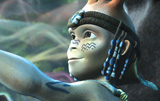
‘Legend of Enyo’ is an animated television adventure series for children aged 8 to 12, centred on a tribe living in a prehistoric world that is slowly dying, and their struggle to survive as they travel to reach a safe haven in a Hidden Valley.
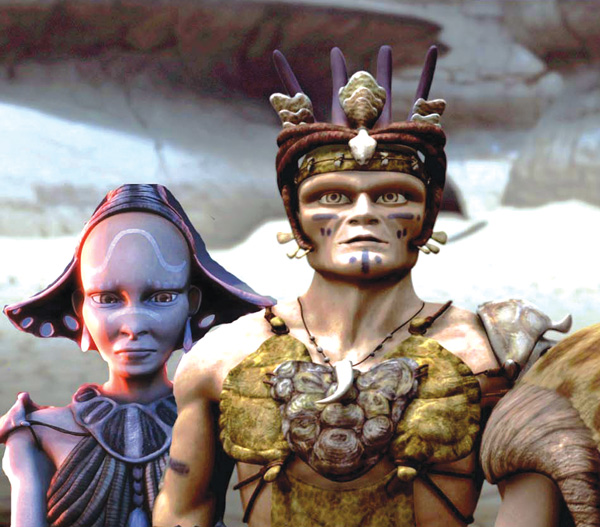 |
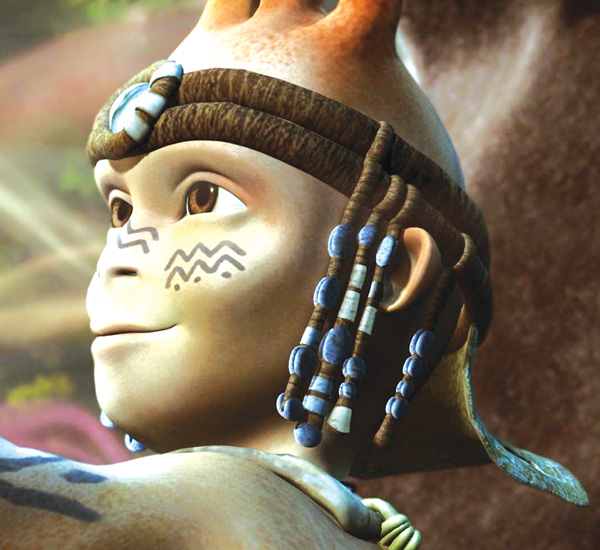 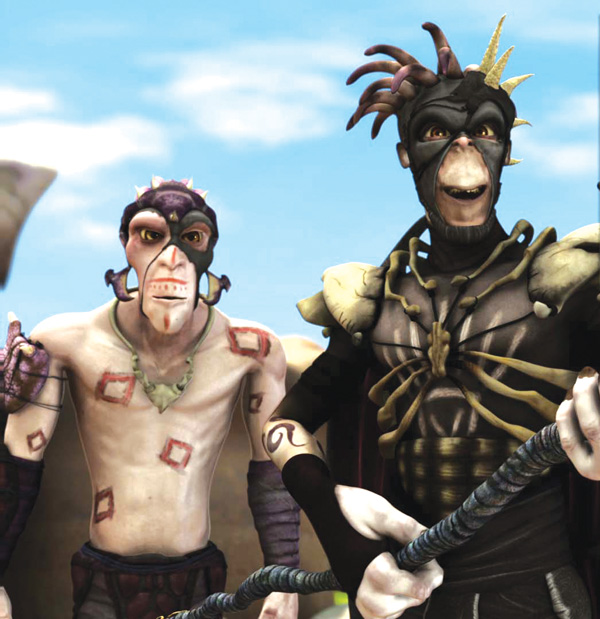 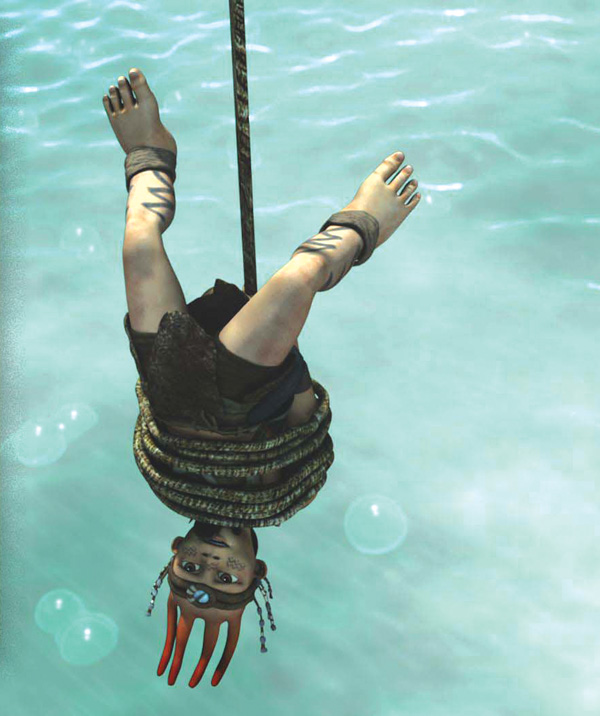 |
|
Developed and produced at Flying Bark Productions in Sydney from a feature film concept originating at a company in Denmark, a full series of 26 24-minute episodes was completed and aired during 2009 and 2010 in Australia on Channel 7 and in northern Europe. The production team, composed mainly of freelance artists, at Flying Bark that created the distinctive characters, assets and environments has since broken up, but we met and spoke to three members, still very enthusiastic and ready to share information about how this unusual project was made. Research at Mungo Art Director on the project was Piero Sgro, who worked on look development for the sparse, arid landscapes of Enyo's world. "Early in production, a small team made up of myself, the director and the key lighter took a short research trip out to Lake Mungo National Park in central NSW for reference," said Piero. "While the Doodjie environment had to be quite distinct from anything humans could relate to, we here in Australia are very fortunate to have country like the area around Mungo that closely resembles the world we were envisioning. The desolate, alien looking land forms range from wide and sweeping to tall and brittle, visually fitting perfectly with the story's conditions." Environments were a combination of 2D and 3D elements blended together. After the Art Department painted skies and distant landscapes in Photoshop, set elements for each environment were modelled and textured using Zbrush, Hedus UVLayout, Photoshop and Maya. Most of the texturing was based on photographic reference, stylized yet lifelike. As well as Lake Mungo, a key reference location was the Gobi Desert of China and Mongolia. Alien Environments Enyo's deteriorating world is only able to support a tenuous existence for the Doodjie tribe, explaining why they are trying to find the Hidden Valley where life is as it was many years ago, lush and plentiful. "Because the majority of the series is set in dry, bleak landscapes, we had to keep the vegetation, needed to provide people with food, to a minimum as a story point," Piero explained. "However, we introduced at least one new plant form per episode to show that the tribe was actually covering large distances across different lands. There is more than meets the eye to some of these plants, some of which, unlike plants on our Earth, are capable of eating animals the size of large horses. The skies were kept fairly earth-like, to keep the story from becoming too unrealistic, though you'll observe extra moons now and then." Shedding Light Lighting TD Tim Kenyon worked with a team of lighters and compositors working out of Global Digital Creations in China. "It's easy in CGI animation to try to push the technical boundaries of the medium and forget that the goal is telling a story. Though we aimed to create lifelike, natural lighting, this never interfered with setting the best mood for a scene. During early discussions with the Series Creator, Director and Art Director we decided that the atmosphere should evolve and grow starker as the series progressed." Painterly Inspiration These rigs could be adjusted to suit the scene. A character's light rig could produce either very harsh midday lighting or adjusted to a softer diffused early morning light. During the series the characters encounter new locations and scenarios requiring a customized approach. For each new situation, key lighting concepts were created and translated into rigs and rendering setups. In several episodes, lighting styles for the times of day were almost completely replaced to suit the story. Render Strategy Most shots would have between five and 15 render passes, and character passes were rendered separately from the environment to be able to light them independently and gain additional control over the grading of both. Occlusion passes gave subtle shadow details on the characters and character/environment interactions. For example, when a character touches a wall in diffused lighting, the occlusion pass would create a slight darkness where the character's hand came in contact with the wall. They also used a normals pass for additional rim and fill light tweaks in compositing. The depth pass produced fog and depth haze, and a mask for creating depth of field in the composite. |


















